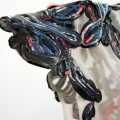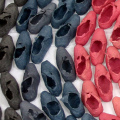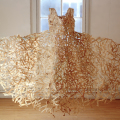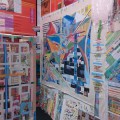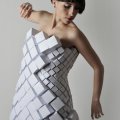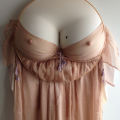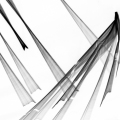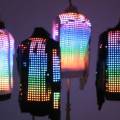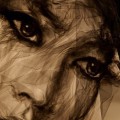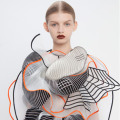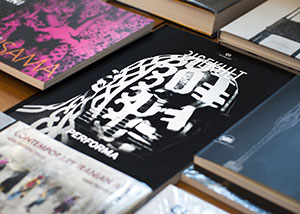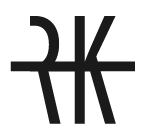James Merry is an English-born embroidery artist based in Iceland, where he has been living and working with Björk since 2009. He works by hand in a variety of media from a lakeside cabin fifteen minutes outside of Reykjavík “I get great joy seeing that words traditionally associated with needlepoint now permeate the language of all things digital”. James Merry is originally from Gloucestershire in the UK, now based in Iceland.He works from a small cabin studio on a lake fifteen minutes outside of Reykjavík, working by hand in a variety of mediums. James is a self-taught embroiderer, having originally studied Classical Greek at Oxford University. From hiding under his father’s cassock to the idea that the universe and everything in it is made up of subatomic vibrating loops and threads…James Merry takes us on a very personal embroidery journey that, in fact, begins in the womb.Unpicking my relationship with embroidery is harder than I thought it would be. Countless threads connect me back to a childhood surrounded by handicraft and needlework. My earliest encounter with embroidery was unique and somewhat indicative of my resulting career. I’m four years old and sitting on the floor of a Victorian chapel in rural Gloucestershire where my father is the parish priest. Sunday service has just ended, and while he stands at the exit bidding farewell to the congregation, my toddler self tugs at the hem of his cassock, crawling under the layers of the robes to hide by his feet. I still remember this game vividly: poking my head out to surprise parishioners, the churchy smell of the old cloth and this first formative impression of the embroidered details. My memory
can still conjure them up – a white silk vestment adorned with wheat sheaves in dazzling gold threads, a sumptuous chasuble in embroidered green silks, a red stole emblazoned with finely stitched motifs.
These are my earliest memories of needlepoint, and the associations I made back then still inform my relationship with embroidery today. Encountered in a place of playful sanctuary, they were something
sacred and mysteriously symbolic, but also full of human warmth,irresistibly tactile and joyful.
My mother told me recently that she embroidered extensively while she was pregnant with me, and it gives me great comfort to visualise that: the repetitive sewing motion of her hands somehow travelling down our connecting cord and soothing me, strand by strand, then resting the unfinished work on her belly, her other
work-in-progress.Those childhood memories of embroidery display an inherent dichotomy between the domestic and the sacred and the hidden and the visible that is especially satisfying to reflect on now since my
work often focuses on similar moments of contrast: between animal and human, natural and urban, machine and handmade. One of the seductive aspects of working in such an ancient and traditional medium is how open it is to quiet subversion. Embroidery comes with its own automatic host of preconceived associations (domestic,
ecclesiastical, feminine, military, etc), and I have enjoyed playing with these throughout my work. Back in 2015, I began embroidering floral motifs by hand on to my pieces of vintage sportswear, which later grew into a small collection sold by the fashion brand Opening Ceremony. The plants were all embroidered freehand into the machine-made logos, starting with only a vague layout in mind and then allowing the design almost to grow itself as I went. There is a spontaneity and personality to hand embroidery that can never
be replicated by a machine: to me, they are as different as a page of printed text and a handwritten letter.
To embroider something is also to strengthen it, to embellish both its intricacy and structure. The act of sewing often implies some sort of repair and healing, as any nimble-fingered surgeon can
tell you. It is perhaps no coincidence then that embroidery was arecurring visual motif for Björk on her 2015 album Vulnicura (literally “wound curing”). The headpieces I made with her for the subsequent
tour and videos grew out of this idea, and notions of transformation and metamorphosis – the feminine form growing into something animal and other-worldly. But more than anything, each headpiece was an attempt to express part of a specific character that she had created; to take an emotion and find its solid, wearable form. The more recent wire and pearl pieces I have been making are a natural progression of my earlier needlework. I see them as a sort of three-dimensional embroidery, coming off the canvas to float
around the head in every direction. People told me that when photographed these looked like computer-generated imagery, a compliment that I embrace – it emphasises the flow to and fro between
traditional handicraft and modern technology, blurring into each other, back and forth.
This marriage of cutting-edge technology and conventional embroidery technique was also a significant driving force behind my design for the new V&A Membership Pack. Created using state-ofthe-art
eye-tracking technology, the work was designed by digitally tracing the movement of my pupils while viewing a selection of sculptures, and then sewing the resulting data: my gaze, embroidered. It seems that there is something about the simplicity and primal nature of needlework that lends itself to these interactions
with modern technology. It comes as no surprise to me that thelanguage and imagery associated with embroidery are to be found everywhere in modern life. I get great joy seeing that words traditionally associated with needlepoint now permeate the language of all things digital, online and scientific. We talk of email threads, strands of DNA, the web, the net, video editors stitching together footage, and,
most satisfying of all, string theory. I cannot help but identify immediately with an idea that the universe and everything in it is made up of sub-atomic vibrating loops and threads. Maybe embroiderers have
been on to something all along.
James Merry: Digital Needlepoint
AUTHOR: V&A Magazine
LINK: www.jtmarry.com
VIDEOCOMMENTSRELATED POST |
|
|
|
|
































